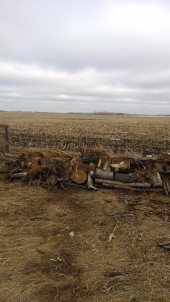I fouond that fruiting plants don't do so well in a hugels first year.
I did cantaloupes in a first year hugel of mixed woods (pine, alder, hawthorn, oak, etc), horse manure and dirt that was top dressed with rabbit manure and straw mulch. All of my greens and peas did great, but the cantaloupe vined out and I never got one fruit. This year I put the cantaloupe in a different 2 year old hugel and it gave me some of the sweetest melons I ever ate. The bed from the previous growing , I planted butternut squash, green beans, and radishes in. I got lots of beans, and 32 large squash, and lots of radishes. The squash was supposed to be a bush variety, but went from bush to some sort of vining- to the point of falling out of the bed.
I also planted some butternut squash and beans in a new hugel, but only got 4 squash and no beans from the same number of plants.
Now my husband's afraid he's going to have to eat squash twice a week to use all of those squash up.

The bed is framed in with 2 old restaurant doors (with windows so you can see the wood) and pallets on the ends, so its about 3 feet tall, by 8 foot, by 4 foot wide. We also had purslane and mushrooms growing until last week at it's base because of the swale filled with wood chips that serves as a path between all of the beds.










